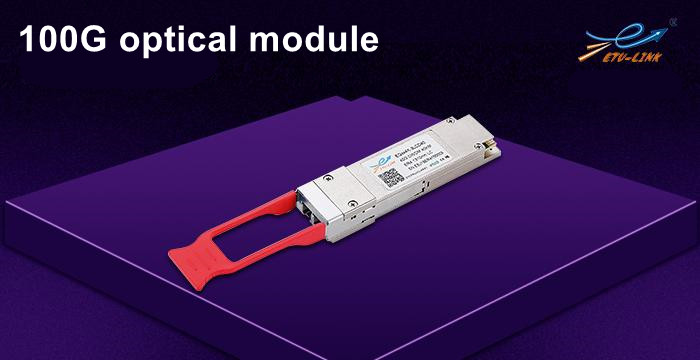
What is the FEC function of 100G optical module?
Two important development trends of optical modules are to increase the transmission rate and extend the transmission distance. However, as the transmission rate increases, the signal transmission distance will be limited by many factors, such as chromatic dispersion, nonlinear effects, and polarization mode dispersion. These factors will limit the increase in transmission rate and transmission distance at the same time. In order to reduce the impact of these unfavorable factors, industry experts have proposed a forward error correction function, referred to as FEC (Forward Error Correction). Next, ETU-LINK will introduce to you what is the FEC function of a 100G optical module.

FEC is a kind of error correction technology. Its appearance is to solve the problem that part of the signal at the transmitting end is disturbed during the transmission process, which causes misjudgment at the receiving end. The optical signal is disturbed during transmission, and the receiving end may misjudge the "1" signal as the "0" signal, or misjudge the "0" signal as the "1" signal. Therefore, the FEC function composes the information code into a code with a certain error correction capability on the channel encoder at the transmitting end, and the channel decoder at the receiving end decodes the received code. If the number of errors generated during transmission is within the range of error correction capability (Discontinuous error), the decoder will locate and correct the error to improve the quality of the signal. The FEC function is used in high-speed optical modules such as 100G. Generally, when this function is turned on, the transmission distance of high-speed optical module will be longer than when FEC function is not turned on.
100G optical modules generally have FEC functions. Although the FEC function has two major advantages: forward error correction and increased transmission distance, it will inevitably cause some data packet delays in the process of correcting errors. Therefore, not all high-speed optical modules It is recommended to enable this function for all modules. For example, when using a 100G QSFP28 LR4 optical module, it is not recommended to turn on the FEC function.
The 100G optical module mainly relies on configuring the FEC function on the device side to achieve error correction, so the switch is also required to support the FEC function. Under normal circumstances, switches that support the FEC function have the FEC function enabled by default. In addition, it should be noted that if the FEC function is enabled on the A-side optical module, the B-side optical module must also enable this function, otherwise the interface will not be Up.
The above is the advantages of 100G optical module FEC function introduced by ETU-LINK and some precautions in use.
Categories
New Blog
Tags
© Copyright: 2025 ETU-Link Technology CO ., LTD All Rights Reserved.

IPv6 network supported
Friendly Links:
易天官网